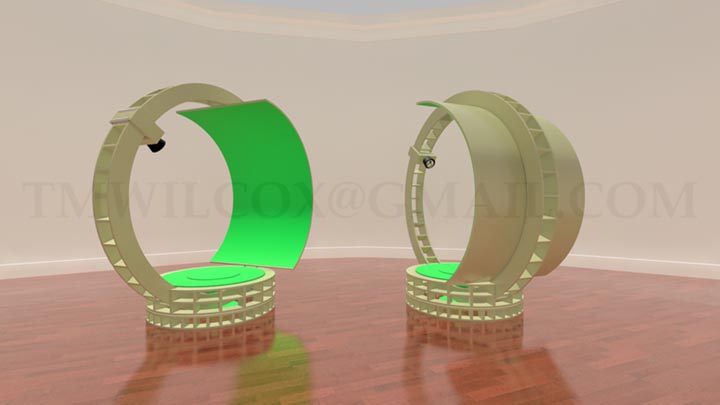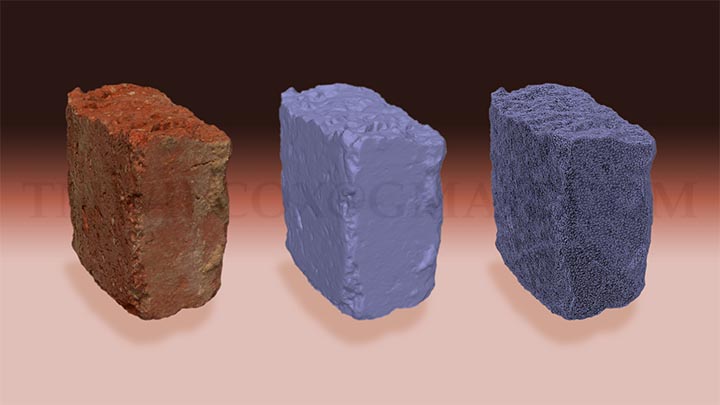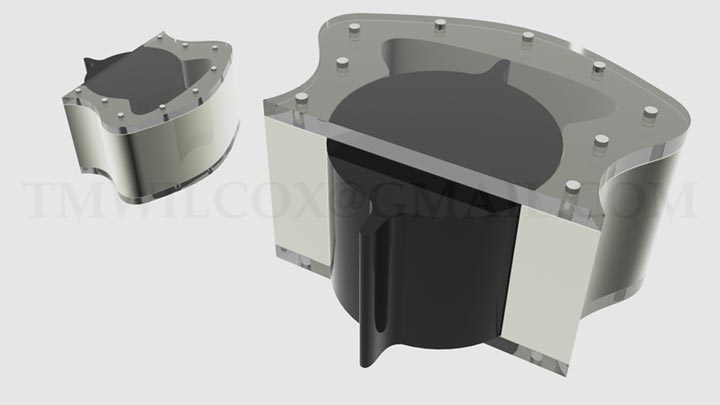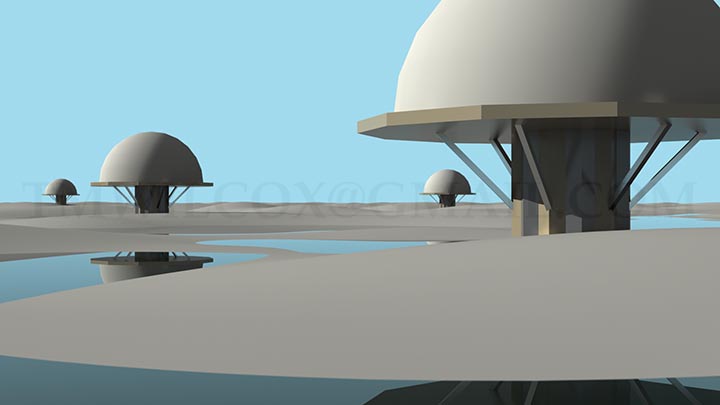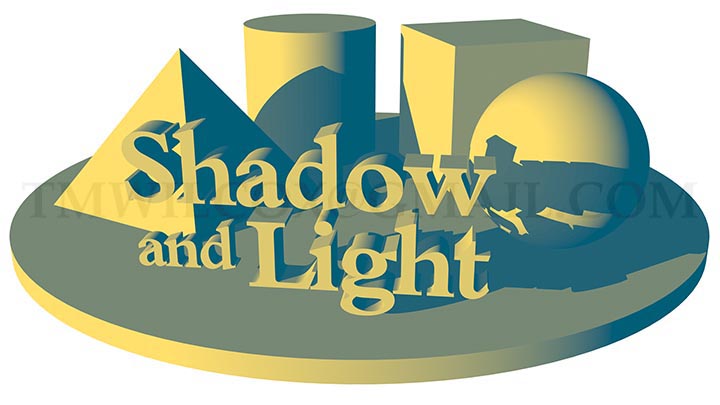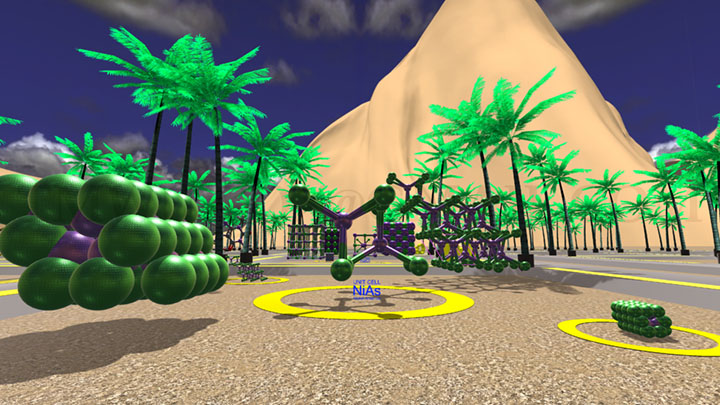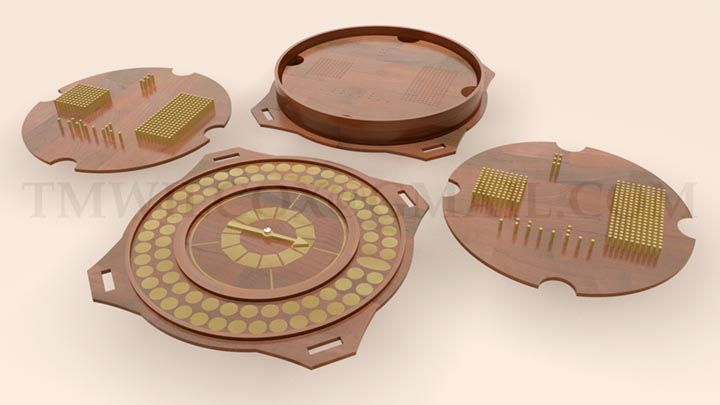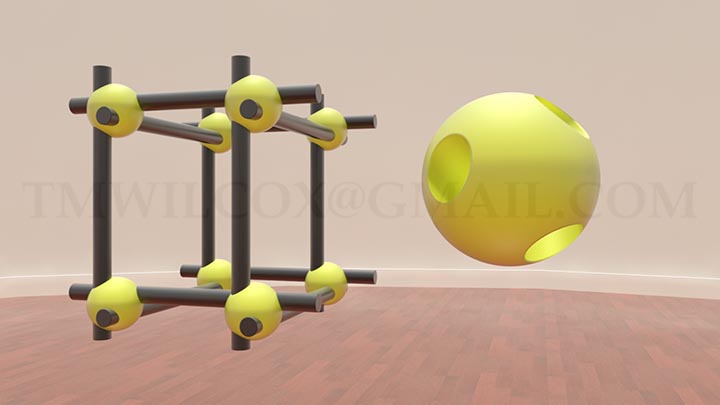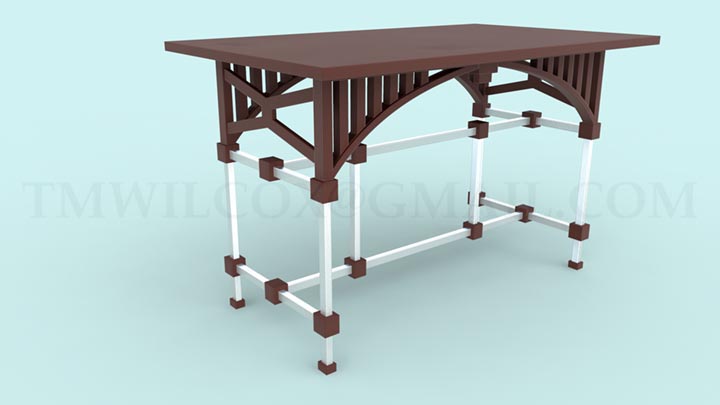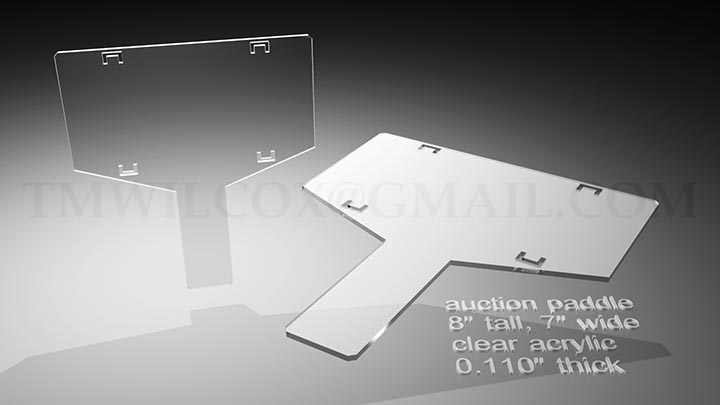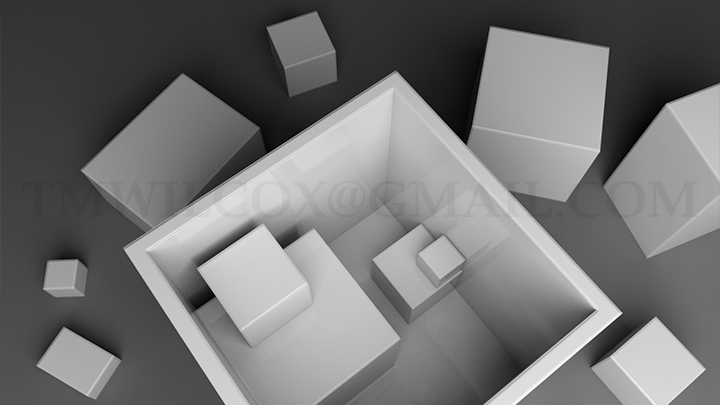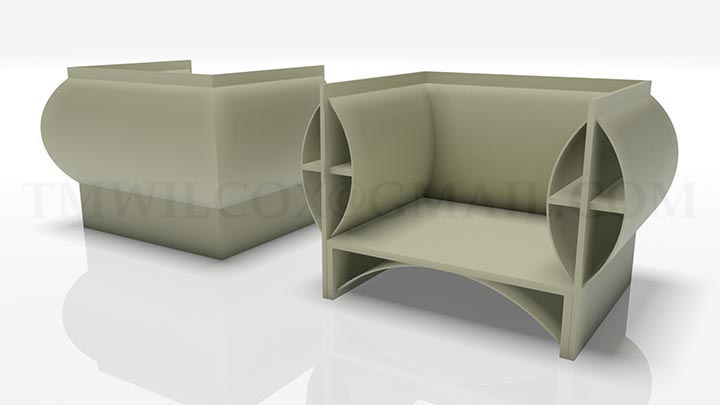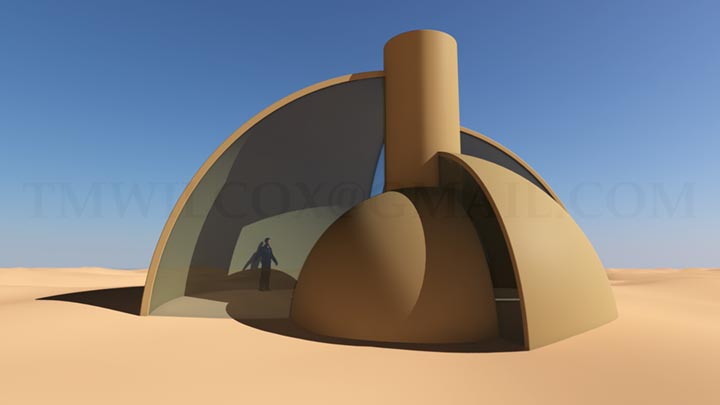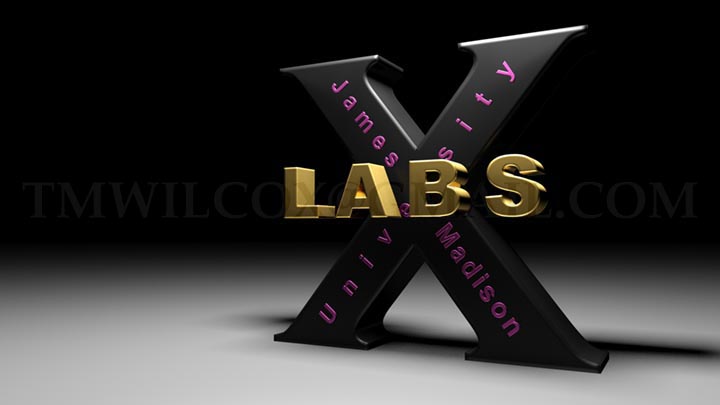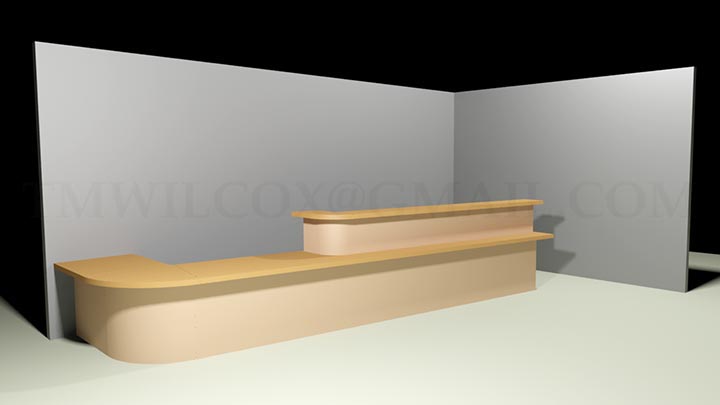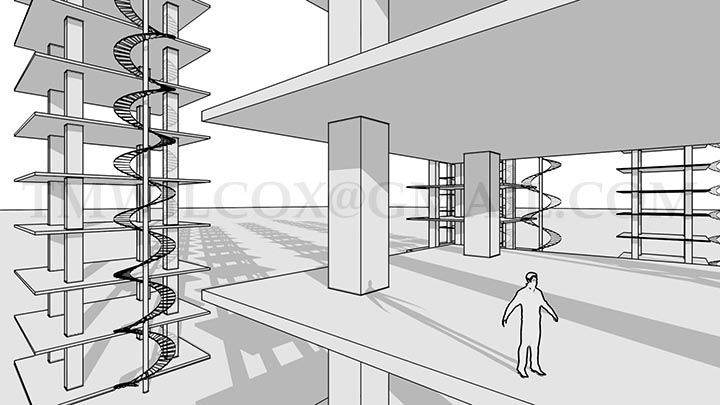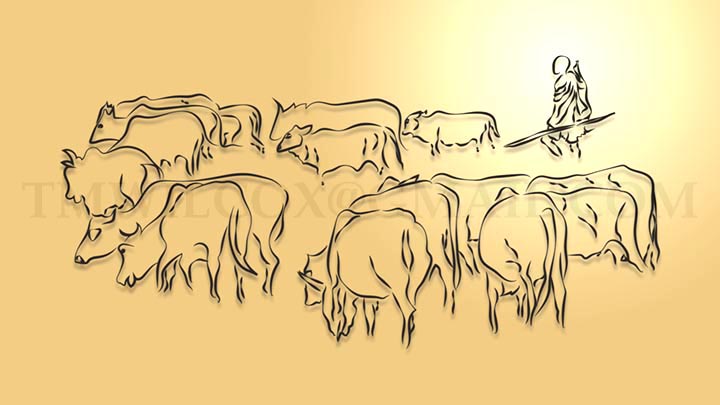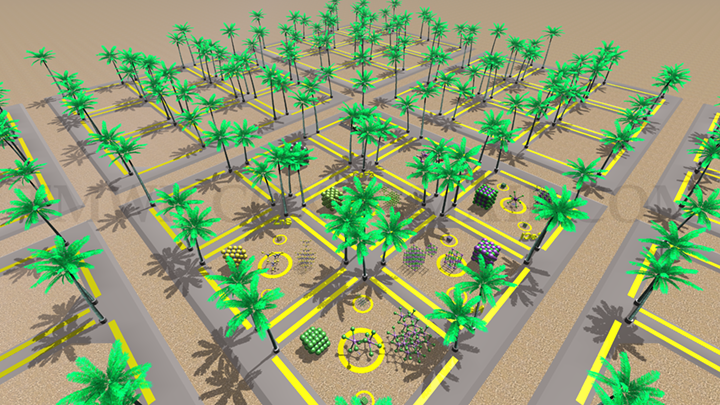
- Case Study -
ODS IMAGES & ANIMATION
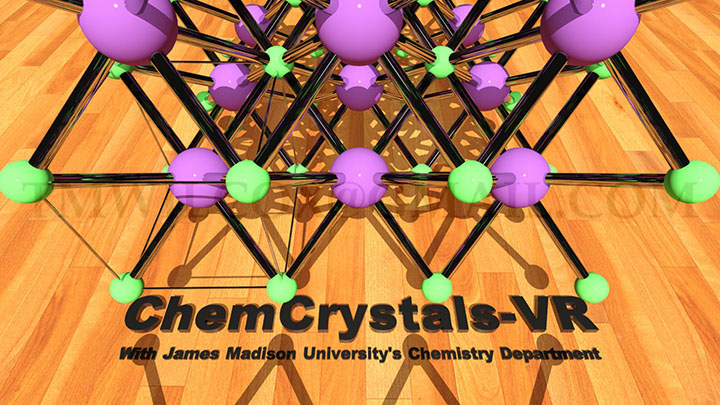
Creating compelling educational software prototypes requires diverse skills, so I developed an alternative for faculty and students. Passive virtual reality trades unrestricted navigation for preselected, omnidirectional viewpoints and pathways. The advantages are that passive VR does not require interaction design or computer programming. While conventional stereoscopy involves 3D photos or live action video, omnidirectional stereo (ODS) images and animation are computer generated (CGI).

Parametric motion paths control ball-and-stick models, lights, and cameras in the Unity game engine and 3ds Max. Recording 360 surround animation at ninety frames per second is like making a movie with a spherical camera lens. Resembling flattened maps of a globe, every frame is a high resolution equirectangular projection on the inside surface of a virtual sphere surrounding the observer.
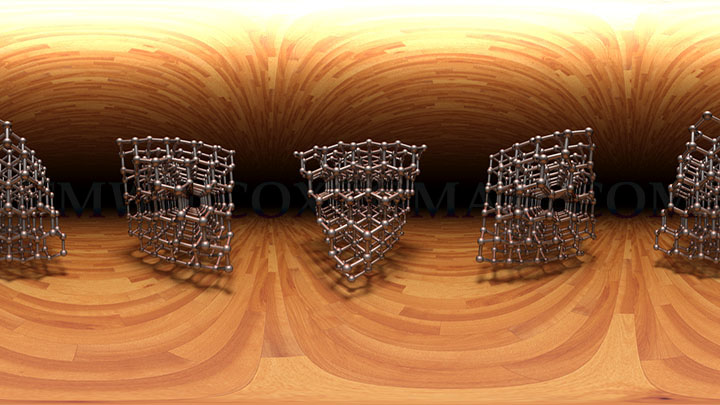
Using a technique borrowed from the expired Pictoshpere patent, I made instructional DemoSpheres at the Ice House Innovation Space. Thanks to pre-rendering, they are exquisitely detailed with shadow and light from global illumination. ODS CGI are stereograms comprising twin DemoSpheres rendered with a stereo separation value. Omnidirectional stereo images and animation have no interaction or navigation capability. They are highly engaging all the same.

Creating compelling educational software prototypes requires diverse skills, so I developed an alternative for faculty and students. Passive virtual reality trades unrestricted navigation for preselected, omnidirectional viewpoints and pathways. The advantages are that passive VR does not require interaction design or computer programming. While conventional stereoscopy involves 3D photos or live action video, omnidirectional stereo (ODS) images and animation are computer generated (CGI).

Parametric motion paths control ball-and-stick models, lights, and cameras in the Unity game engine and 3ds Max. Recording 360 surround animation at ninety frames per second is like making a movie with a spherical camera lens. Resembling flattened maps of a globe, every frame is a high resolution equirectangular projection on the inside surface of a virtual sphere surrounding the observer.

Using a technique borrowed from the expired Pictoshpere patent, I made instructional DemoSpheres at the Ice House Innovation Space. Thanks to pre-rendering, they are exquisitely detailed with shadow and light from global illumination. ODS CGI are stereograms comprising twin DemoSpheres rendered with a stereo separation value. Omnidirectional stereo images and animation have no interaction or navigation capability. They are highly engaging all the same.

Parametric motion paths control ball-and-stick models, lights, and cameras in the Unity game engine and 3ds Max. Recording 360 surround animation at ninety frames per second is like making a movie with a spherical camera lens. Resembling flattened maps of a globe, every frame is a high resolution equirectangular projection on the inside surface of a virtual sphere surrounding the observer.

Using a technique borrowed from the expired Pictoshpere patent, I made instructional DemoSpheres at the Ice House Innovation Space. Thanks to pre-rendering, they are exquisitely detailed with shadow and light from global illumination. ODS CGI are stereograms comprising twin DemoSpheres rendered with a stereo separation value. Omnidirectional stereo images and animation have no interaction or navigation capability. They are highly engaging all the same.
